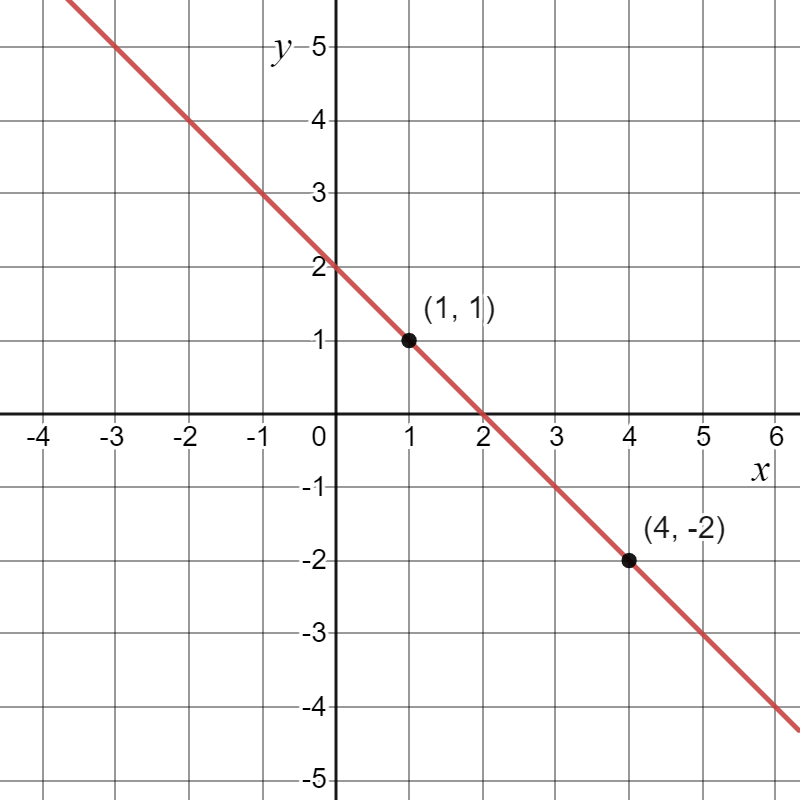-13=a-14
a=1
-7b>28
b<-4
Is the sequence arithmetic?
-7, -1, 5, 11, 17
Yes
Identify the slope and y-intercept of the line:
y=-3/7x+5
Slope: -3/7
y: (0,5)
Factor the quadratic expression
x^2-12x-45
(x-15)(x+3)
-9 -5 n = 66
n=-15
-9v-5<=-158
v>=17
Each input has exactly one output.
Write an equation of a line in slope-intercept form whose slope is -5 and y-intercept is (0, -11)
y=-5x-11
What are the three forms of quadratic equations?
Factored:
f(x)=k(x-a)(x-b)
Vertex:
f(x)=a(x-h)^2+k
Standard:
f(x)=ax^2+bx+c
-2 (x + 5) = 18
x=-14
73>1+8k
k<9
Find the 37th term in the sequence represented by the rule:
f(n)=-2n+17
-57
Write the equation of the linear function with the given graph.

y=-x+2
Identify the vertex of the quadratic function and describe its transformations.
g(x)=-1/2(x-1)^2+3
Upside down, wider, right one and up three
Vertex:
(1,3)
-2 = (-3 + m) / 3
m=-3
1>(10+a)/20
a<10
State the domain and range of the relation. Is the relation a function?
(1, 2), (0, 9), (3, 5), (-1, 0), (-5, -5)
Yes, the relation is a function
Domain: 1, 0, 3, -1, -5
Range: 2, 9, 5, 0, -5
Find the slope of a line passing through the points (1, -1) and (4, 3)
m=4/3
Factor the quadratic expression
3x^2-11x-10
(3x-5)(x-2)
213 = 7 (1 + 6x) - 4
x=5
-91<-7(1-2n)
n>(-6)
Find the common difference of the arithmetic sequence and the recursive formula.
3, 13, 23, 33, 43, ...
d=10
f(n)=f(n-1)+10
Write the equation of a line in slope-intercept form that passes through the points (-4, 1) and (-3, 5)
y=4x+17
Identify the zeros of the quadratic function.
h(x)=2x^2-5x-3
x=-1/2, x=3